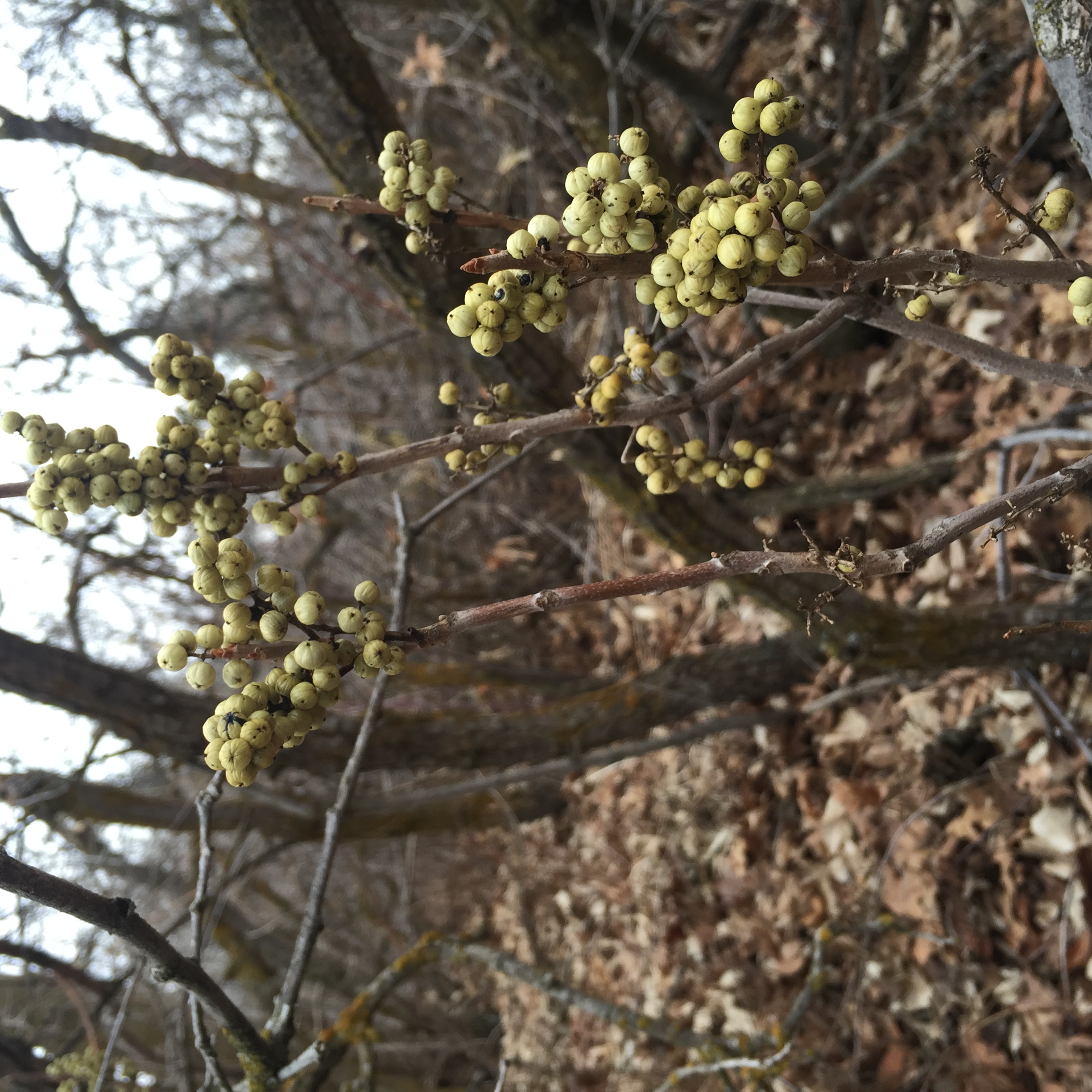Toxicodendron rydbergii on:
[Wikipedia]
[Google]
[Amazon]
''Toxicodendron rydbergii'', the western poison ivy, is a species of ''Rydberg, Per Axel 1900. Memoirs of The New York Botanical Garden 1: 268–269
as ''Rhus rydbergii'' 
Toxicodendron
''Toxicodendron'' is a genus of flowering plants in the sumac family, Anacardiaceae. It contains trees, shrubs and woody vines, including poison ivy, poison oak, and the lacquer tree. All members of the genus produce the skin-irritating oil ur ...
'' in the cashew family. It is native to most of Canada from the Maritimes to British Columbia, and most of the contiguous
Contiguity or contiguous may refer to:
*Contiguous data storage, in computer science
*Contiguity (probability theory)
*Contiguity (psychology)
* Contiguous distribution of species, in biogeography
* Geographic contiguity of territorial land
*Conti ...
United States except the southeastern states, New Jersey, Delaware, and California. It can be found growing in forests, and other wooded areas, usually near streams and rivers.
Unlike '' Toxicodendron radicans'' (eastern poison ivy), which often appears as a trailing or climbing vine, ''Toxicodendron rydbergii'' is a shrub that can grow to 1 m (3 ft) tall, rarely up to 3 m (10 ft). The leaves are trifoliate
The following is a list of terms which are used to describe leaf morphology in the description and taxonomy of plants. Leaves may be simple (a single leaf blade or lamina) or compound (with several leaflets). The edge of the leaf may be regular o ...
and alternate
Alternative or alternate may refer to:
Arts, entertainment and media
* Alternative (''Kamen Rider''), a character in the Japanese TV series ''Kamen Rider Ryuki''
* ''The Alternative'' (film), a 1978 Australian television film
* ''The Alternative ...
. The leaflets are variable in size and shape, and are usually 15 cm (6 in) long, turning yellow or orange in autumn. On the compound
Compound may refer to:
Architecture and built environments
* Compound (enclosure), a cluster of buildings having a shared purpose, usually inside a fence or wall
** Compound (fortification), a version of the above fortified with defensive struc ...
trifoliate leaves, the two leaflets opposite each other are typically asymmetrical
Asymmetry is the absence of, or a violation of, symmetry (the property of an object being invariant to a transformation, such as reflection). Symmetry is an important property of both physical and abstract systems and it may be displayed in pre ...
, in contrast to the terminal leaflet which always shows bilateral symmetry
Symmetry in biology refers to the symmetry observed in organisms, including plants, animals, fungi, and bacteria. External symmetry can be easily seen by just looking at an organism. For example, take the face of a human being which has a pl ...
. The fruits are small, round, and yellowish.as ''Rhus rydbergii''

Description
'' Toxicodendron rydbergii '' is a bushy shrub (height 30 cm). Leaves alternate, often shiny; with 3 divisions (leaflets), each with a tail, the one in the center a little longer; leaflets irregular in outline and sinuous with or without teeth, well marked veins; color varying with the seasons: wine red in spring, green in summer and multicolored in autumn. Creamy white or greenish flowers clustered in cones at the base of the leaves. Ribbed fruits; white, yellow or brown; the size of a dry pea; noticeable especially when the leaves have fallen. Most often, we find individuals without flowers and fruits.Caution
All parts of this plant contain urushiol, which can cause severecontact dermatitis
Contact dermatitis is a type of acute or chronic inflammation of the skin caused by exposure to chemical or physical agents. Symptoms of contact dermatitis can include itchy or dry skin, a red rash, bumps, blisters, or swelling. These rashes are ...
in most individuals.
References
{{Taxonbar, from=Q7830405 rydbergii Flora of North America Plants described in 1900